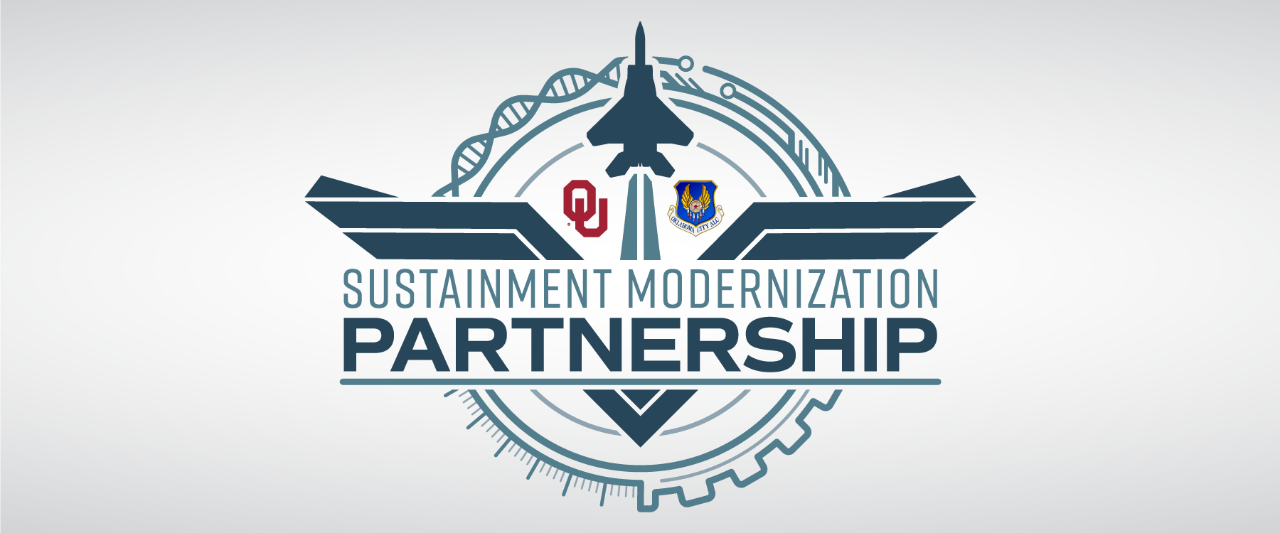
The Oklahoma City Air Logistics Complex, headquartered at Tinker Air Force Base, is funding six research projects at the University of Oklahoma. A seventh project is being funded by the Air Force Research Laboratory. The nearly $5 million total investment will fund research that addresses sustainment and modernization needs for the Air Force.
“Our partnership with OU is instrumental to our ability to meet future mission challenges,” said OC-ALC Cmdr. Maj. Gen. Jeffrey R. King. “These awards, following closely on the heels of our educational partnership agreement and software satellite facility on the Norman campus, represent the next step in this growing and vital relationship.”
OU signed an educational partnership agreement with OC-ALC in July 2020 to cultivate aerospace and defense technology development and to improve and enhance education in science, technology, engineering and mathematics. Following the development of OU’s Lead On, University strategic plan, which defines four “centers of excellence” dedicated to solving significant real-world challenges, OU has created the Oklahoma Aerospace and Defense Innovation Institute to grow the university’s capabilities to address challenges in aerospace, defense and global security.
“These projects are an outstanding example of how OU’s growing research and development in the national security sector can impact some of the most pressing needs of the Air Force today and for years to come,” said Tomás Díaz de la Rubia, Vice President for Research and Partnerships on the OU Norman campus. “We look forward to the continued growth of our strategic partnership with Tinker Air Force Base and the OC-ALC, and to seeing the fruits of this research make a positive impact for our national defense.”
OU also recently signed a memorandum of understanding with Oak Ridge National Laboratory, a facility of the Department of Energy, to leverage both institutions’ combined capabilities in support of solving global grand challenges.
“ORNL is the nation’s largest science and energy laboratory and houses world-class capabilities such as the Leadership Class Computing and Manufacturing Demonstration facilities,” said Moe Khaleel, Interim Deputy Director for Science and Technology at ORNL. “ORNL and the University of Oklahoma are teaming together to support the development of advanced materials and manufacturing technologies for air force application and advancing the nation’s hydrogen economy to support the nation’s drive toward net-zero emissions.”
“The strength of these partnerships adds significant value to our faculty and students working on Air Force sustainment research and will further benefit greatly from our partnership with ORNL, one of the nation’s premier and largest national laboratories,” Díaz de la Rubia said.
Aerospace and defense is currently the second-largest industry in Oklahoma and is an area of rapid economic growth for the state.
“During the annual appropriations process for fiscal year 2021 and knowing of OU’s tremendous expertise, I was proud to support funding for research to enhance these capabilities for the U.S. Air Force as it relates to sustainment and modernization,” said U.S. Rep. Tom Cole (OK-04). “To advance and conduct research that will help solve problems in these key areas, there is no better partner than the University of Oklahoma.”
“It is a pleasure to support such worthy investment, both in the OU community and statewide,” he added. “While addressing challenges in aerospace, this new investment will bolster both technological advancement and educational opportunities, as well as further build a workforce ready for these types of jobs.”
This initiative is funding research projects led by faculty with the Gallogly College of Engineering, including the college’s dean John Klier and faculty members Dean Hougen, Kuang-Hua Chang, Mustafa Altan, Yingtao Liu and Tian-You Yu. These projects are focused on addressing challenges related to additive and advanced manufacturing, coatings and composites, and embedded software and sensor systems. Advancements in all of these areas are critically important to assuring the readiness, sustainment and modernization of the Air Force’s most sophisticated platforms and systems.
OADII, through an emphasis on addressing military sustainment and modernization, brings together university expertise and resources to improve additive manufacturing practices and develop innovative approaches to advanced materials that can reduce sustainment costs and improve the functionality of legacy defense platforms. Learn more at www.ou.edu/oadii